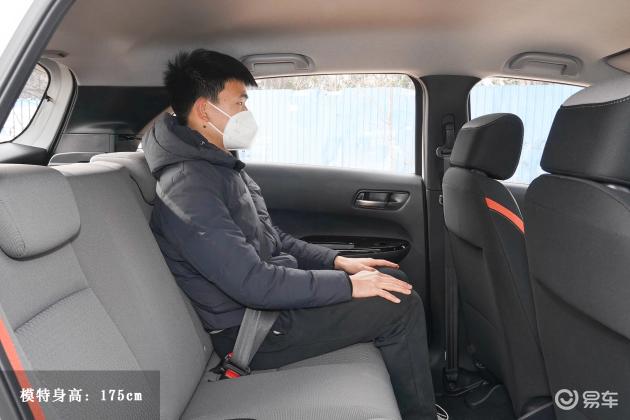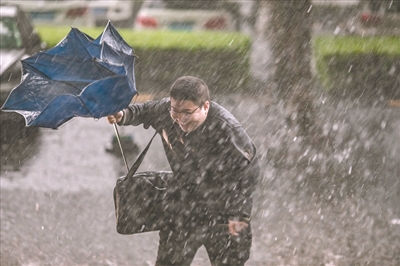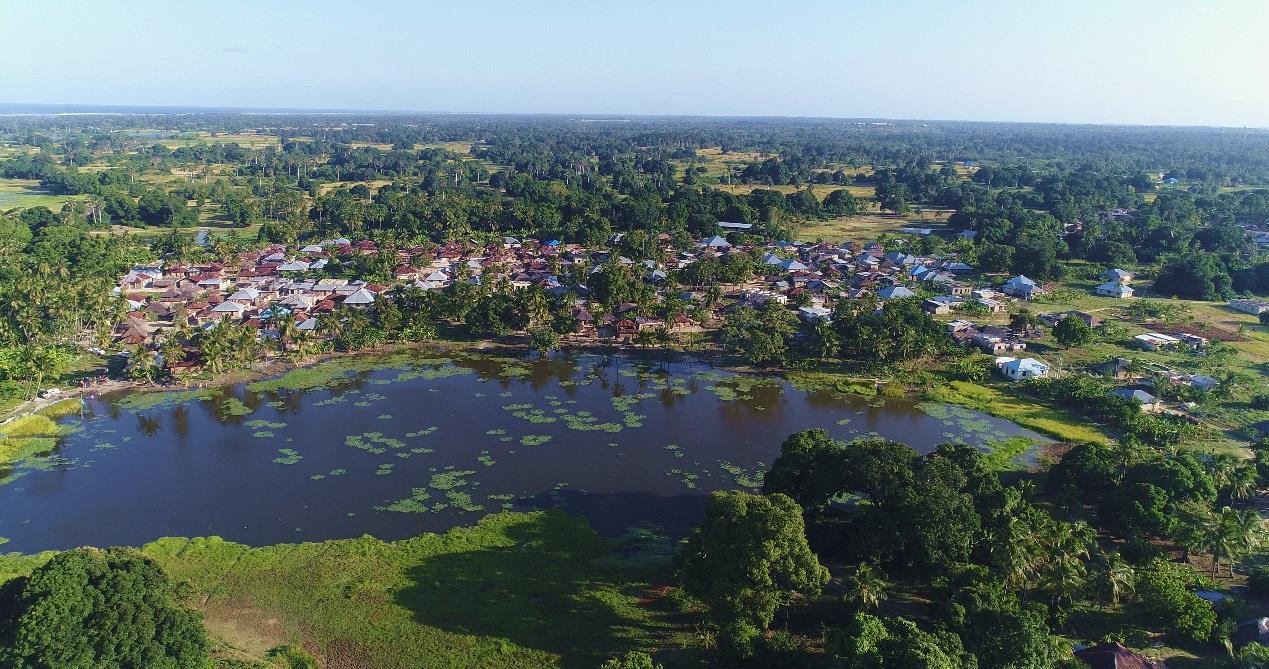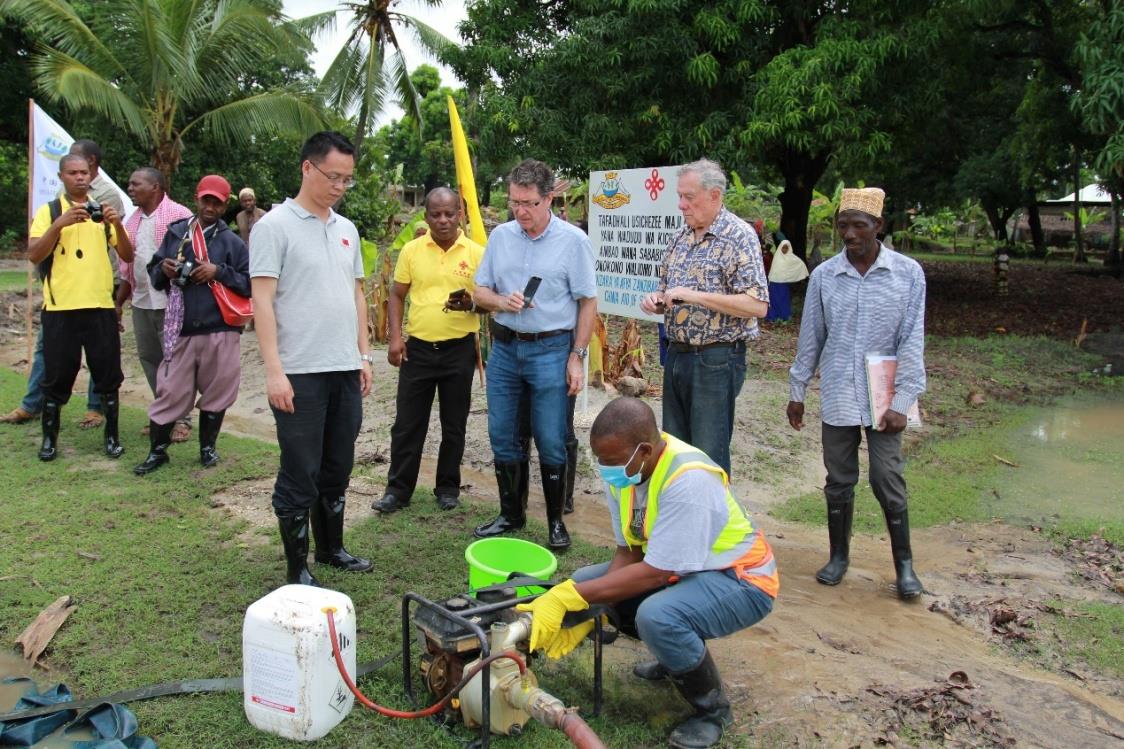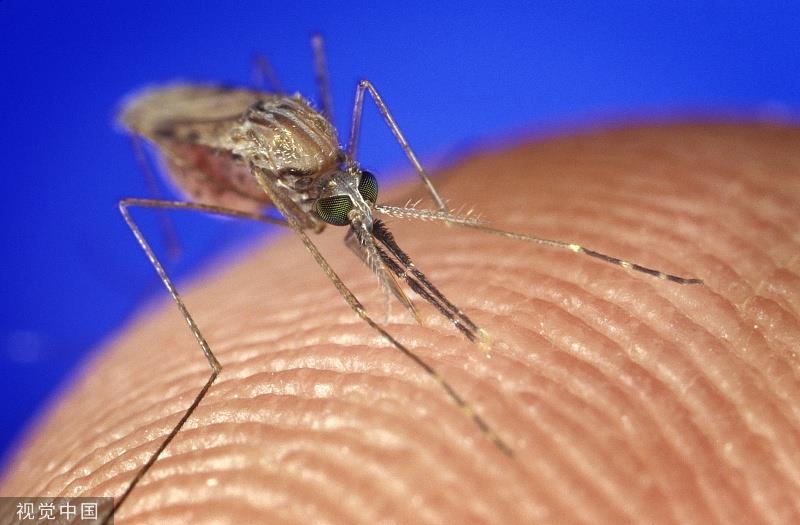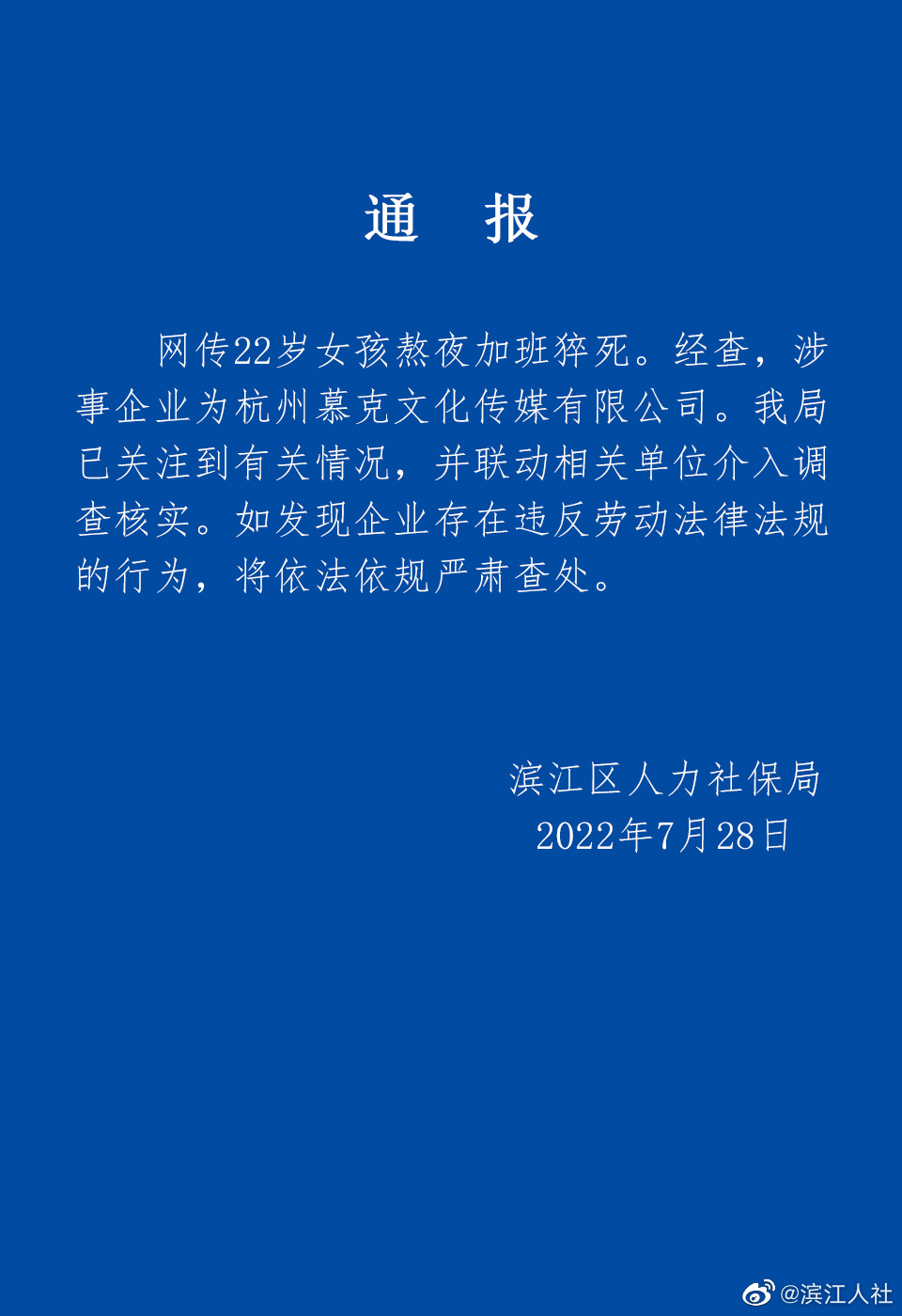A typhoon warning signal
Typhoon warning signals are divided into four levels, which are represented by blue, yellow, orange and red respectively.
(1) Typhoon blue warning signal
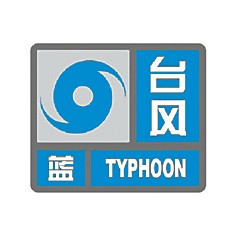
Standard: It may or has been affected by tropical cyclones within 24 hours, and the average wind force along the coast or land is above 6, or the gust is above 8 and may continue.
Defense Guide: 1. The government and relevant departments should make preparations for typhoon prevention according to their duties; 2. Stop outdoor collective activities and dangerous outdoor operations such as high altitude; 3. Take active measures for water operations and passing ships in relevant waters, such as returning to Hong Kong to avoid the wind or sailing around; 4. Reinforce the structures that are easy to be blown by the wind, such as doors and windows, hoardings, scaffolding, billboards, etc., and cut off the dangerous outdoor power supply.
(2) Typhoon yellow warning signal
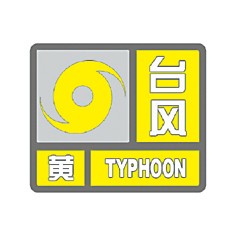
Standard: it may be or has been affected by tropical cyclones within 24 hours, and the average wind force along the coast or land is above 8, or the gust is above 10 and may continue.
Defense Guide: 1. The government and relevant departments should prepare for typhoon emergency according to their duties; 2. Stop large-scale indoor and outdoor gatherings and outdoor dangerous operations such as high altitude; 3. Take active measures for water operations and passing ships in relevant waters to strengthen port facilities and prevent ships from anchoring, grounding and collision; 4. Reinforce or dismantle structures that are easy to be blown by the wind. Personnel should not go out at will, ensure that the elderly and children stay in the safest place at home, and the dangerous house personnel will be transferred in time.
(3) Typhoon orange warning signal

Standard: It may or has been affected by tropical cyclones within 12 hours, and the average wind force along the coast or land is above 10, or the gust is above 12 and may continue.
Defense Guide: 1. The government and relevant departments should do a good job in typhoon prevention and emergency rescue according to their duties; 2. Stop large-scale indoor and outdoor gatherings, suspend classes and business (except for special industries); 3. Water operations and passing ships in relevant waters should return to Hong Kong to take shelter from the wind and strengthen port facilities to prevent ships from anchoring, grounding and collision; 4. To reinforce or dismantle structures that are easily blown by the wind, the personnel should stay in a windproof and safe place as far as possible. When the typhoon center passes, the wind will decrease or stay still for a period of time. Remember that strong winds will suddenly blow, and they should continue to stay in a safe place to avoid the wind, and the dangerous personnel should be transferred in time; 5. Relevant areas should pay attention to prevent flash floods and geological disasters that may be caused by heavy precipitation.
(4) Typhoon red warning signal
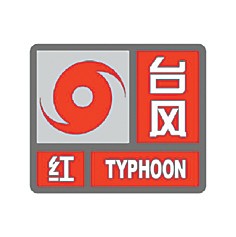
Standard: It may or has been affected by tropical cyclones within 6 hours, and the average wind force along the coast or land is above 12, or the gust is above 14 and may continue.
Defense Guide: 1. The government and relevant departments should do a good job in typhoon emergency and emergency rescue according to their duties; 2. Stop the assembly, suspend classes and suspend business (except for special industries); 3. Ships returning to Hong Kong to take shelter from the wind should take active measures according to the situation, and properly arrange personnel to stay behind or move to a safe place; 4. To reinforce or dismantle the structures that are easy to be blown by the wind, the personnel should stay in a windproof and safe place. When the typhoon center passes by, the wind will decrease or stay still for a period of time. Remember that the strong wind will suddenly blow, and they should continue to stay in a safe place to avoid the wind, and the dangerous people should be transferred in time; 5. Relevant areas should pay attention to prevent flash floods and geological disasters that may be caused by heavy precipitation.
Second, the rainstorm warning signal
The rainstorm warning signal is divided into four levels, which are represented by blue, yellow, orange and red respectively.
(A) rainstorm blue warning signal
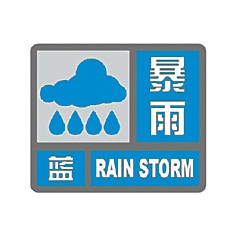
Standard: within 12 hours, the rainfall will reach more than 50 mm, or it has reached more than 50 mm and the rainfall may continue.
Defense Guide: 1. The government and relevant departments should prepare for the rainstorm according to their duties; 2. Schools and kindergartens take appropriate measures to ensure the safety of students and children; 3. Drivers should pay attention to road water and traffic jams to ensure safety; 4. Check the drainage system of cities, farmland and fish ponds, and prepare for drainage.
(2) yellow rainstorm warning signal
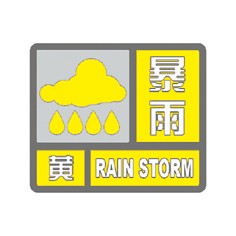
Standard: The rainfall will reach more than 50 mm within 6 hours, or it has reached more than 50 mm and the rainfall may continue.
Defense guide: 1. The government and relevant departments should do a good job in preventing rainstorm according to their duties; 2. The traffic management department shall take traffic control measures in heavy rainfall sections according to the road conditions, and implement traffic guidance in waterlogged sections; 3. Cut off the dangerous outdoor power supply in low-lying areas, suspend outdoor work in open places, and transfer people in dangerous areas and residents of dangerous houses to safe places to shelter from the rain; 4. Check the drainage system of cities, farmland and fish ponds and take necessary drainage measures.
(C) rainstorm orange warning signal
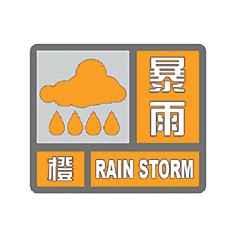
Standard: within 3 hours, the rainfall will reach more than 50 mm, or it has reached more than 50 mm and the rainfall may continue.
Defense guide: 1. The government and relevant departments should do a good job in emergency prevention of rainstorm according to their duties; 2. Cut off the dangerous outdoor power supply and suspend outdoor work; 3. Units in danger zones shall suspend classes or business, and take special measures to protect the safety of students, children and other working personnel who have arrived at school; 4. Do a good job in the drainage of cities and farmland, and pay attention to prevent possible disasters such as flash floods, landslides and mudslides.
(4) Rainstorm red warning signal
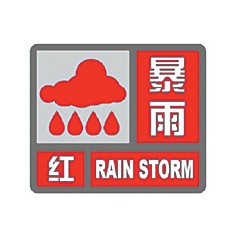
Standard: within 3 hours, the rainfall will reach more than 100 mm, or it has reached more than 100 mm and the rainfall may continue.
Defense Guide: 1. The government and relevant departments should do a good job in emergency and rescue against rainstorm according to their duties; 2. Stop the assembly, suspend classes and suspend business (except for special industries); 3. Do a good job in the prevention and rescue of mountain torrents, landslides, mudslides and other disasters.
Third, the blizzard warning signal
Blizzard warning signals are divided into four levels, which are represented by blue, yellow, orange and red respectively.
(1) Blizzard Blue Warning Signal
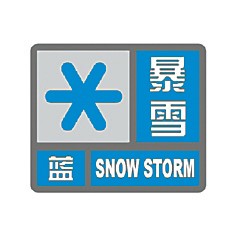
Standard: within 12 hours, the snowfall will reach more than 4 mm, or it has reached more than 4 mm and the snowfall continues, which may have an impact on traffic or agriculture and animal husbandry.
Defense Guide: 1. The government and relevant departments should prepare for snow disaster and freezing injury according to their duties; 2 transportation, railway, electric power, communications and other departments should carry out road, railway and line inspection and maintenance, and do a good job in road cleaning and snow melting; 3. Pedestrians should pay attention to cold prevention and anti-skid, drivers should drive carefully, and vehicles should take anti-skid measures; 4. Farming and pastoral areas and breeding industries should reserve feed and prepare for snow disaster prevention and freezing injury prevention; 5. Reinforce temporary structures that are easily crushed by snow, such as scaffolding.
(B) Blizzard yellow warning signal
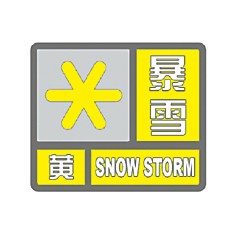
Standard: within 12 hours, the snowfall will reach more than 6 mm, or it has reached more than 6 mm and the snowfall continues, which may have an impact on traffic or agriculture and animal husbandry.
Defense Guide: 1. The government and relevant departments shall implement measures to prevent snow disaster and freezing damage according to their duties; 2 transportation, railway, electric power, communications and other departments should strengthen the inspection and maintenance of roads, railways and lines, and do a good job in road cleaning and snow melting; 3. Pedestrians should pay attention to cold prevention and anti-skid, drivers should drive carefully, and vehicles should take anti-skid measures; 4. Farming and pastoral areas and breeding industries should prepare enough feed to prevent snow disasters and freezing damage; 5. Reinforce temporary structures that are easily crushed by snow, such as scaffolding.
(3) Blizzard orange warning signal
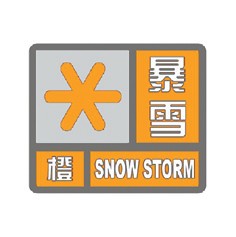
Standard: within 6 hours, the snowfall will reach more than 10 mm, or it has reached more than 10 mm and the snowfall continues, which may or has already had a great impact on traffic or agriculture and animal husbandry.
Defense guide: 1. The government and relevant departments should do emergency work to prevent snow disaster and freezing injury according to their duties; 2 transportation, railway, electric power, communications and other departments should strengthen the inspection and maintenance of roads, railways and lines, and do a good job in road cleaning and snow melting; 3. Reduce unnecessary outdoor activities; 4. Reinforce temporary structures that are easily crushed by snow, such as scaffolding, and drive outdoor livestock into the shed to feed.
(4) Blizzard red warning signal
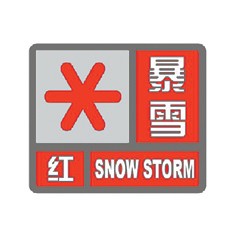
Standard: within 6 hours, the snowfall will reach more than 15mm, or it has reached more than 15mm and the snowfall continues, which may or has had a great impact on traffic or agriculture and animal husbandry.
Defense Guide: 1. The government and relevant departments should do emergency and rescue work to prevent snow disaster and freezing injury according to their duties; 2. If necessary, suspend classes or business (except for special industries); 3. When necessary, the aircraft will be suspended from taking off and landing, the train will be suspended, and the expressway will be temporarily closed; 4. Do a good job in disaster relief work in pastoral areas.
Fourth, the cold wave warning signal
The cold wave warning signal is divided into four levels, which are represented by blue, yellow, orange and red respectively.
(A) cold wave blue warning signal
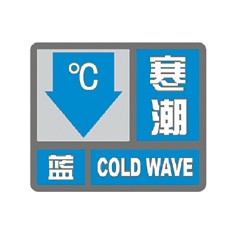
Standard: within 48 hours, the minimum temperature will drop by more than 8℃, the minimum temperature will be less than or equal to 4℃, and the average wind power on land will reach more than 5. Or it has dropped by more than 8℃, the lowest temperature is less than or equal to 4℃, and the average wind power reaches more than 5, which may continue.
Defense Guide: 1. The government and relevant departments should prepare for the cold wave according to their duties; 2. Pay attention to adding clothes to keep warm; 3. Take certain protective measures for tropical crops and aquatic products; 4. Prepare for the wind.
(2) Cold wave yellow warning signal
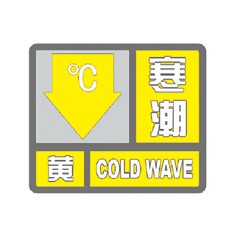
Standard: within 24 hours, the minimum temperature will drop by more than 10℃, the minimum temperature is less than or equal to 4℃, and the average wind power on land can reach above 6. Or it has dropped by more than 10℃, the lowest temperature is less than or equal to 4℃, and the average wind force is above 6, and it may continue.
Defense guide: 1. The government and relevant departments should do a good job in preventing cold wave according to their duties; 2. Pay attention to add clothes to keep warm and take care of the old, weak and sick; 3. Take cold-proof measures for livestock, poultry, tropical and subtropical fruits and related aquatic products and crops; 4. Do a good job of windproof.
(3) Cold wave orange warning signal
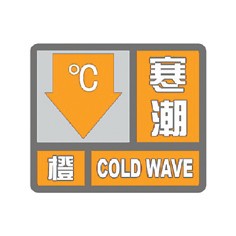
Standard: within 24 hours, the minimum temperature will drop by more than 12℃, the minimum temperature is less than or equal to 0℃, and the average wind power on land can reach above 6. Or it has dropped by more than 12℃, the lowest temperature is less than or equal to 0℃, and the average wind force is above 6, and it may continue.
Defense guide: 1. The government and relevant departments should do a good job in preventing cold wave emergency according to their duties; 2. Pay attention to cold and warmth; 3. Agriculture, aquaculture, animal husbandry, etc. should actively take anti-frost and freezing measures to minimize losses; 4. Do a good job of windproof.
(4) Cold wave red warning signal
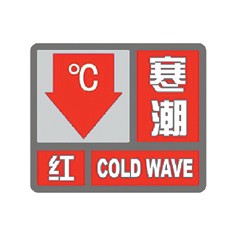
Standard: within 24 hours, the minimum temperature will drop by more than 16℃, the minimum temperature is less than or equal to 0℃, and the average wind power on land can reach above 6. Or it has dropped by more than 16℃, the lowest temperature is less than or equal to 0℃, and the average wind force is above 6, and it may continue.
Defense Guide: 1. The government and relevant departments should do a good job of emergency and rescue against cold wave according to their duties; 2. Pay attention to cold and warmth; 3. Agriculture, aquaculture, animal husbandry, etc. should actively take anti-frost and freezing measures to minimize losses; 4. Do a good job of windproof.
Five, strong wind warning signal
The warning signal of gale (except typhoon) is divided into four levels, which are represented by blue, yellow, orange and red respectively.
(A) gale blue warning signal

Standard: It may be affected by strong winds within 24 hours, with an average wind force of more than 6 or a gust of more than 7; Or have been affected by strong winds, the average wind force is 6~7, or the gust is 7~8 and may continue.
Defense Guide: 1. The government and relevant departments should do a good job in preventing strong winds according to their duties; 2. Close the doors and windows, reinforce the structures that are easy to be blown by the wind, such as hoardings, scaffolding and billboards, properly arrange outdoor items that are easily affected by strong winds, and cover building materials; 3. Take active measures for water operations and passing ships in relevant waters, such as returning to Hong Kong to avoid the wind or sailing around; 4. Pedestrians should pay attention to riding bicycles as little as possible, and don’t stay under billboards and temporary structures when it is windy; 5. Relevant departments and units should pay attention to forest and grassland fire prevention.
(2) Gale yellow warning signal
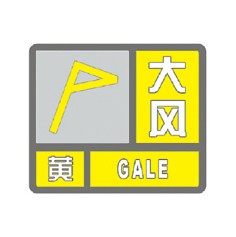
Standard: It may be affected by strong winds within 12 hours, with an average wind force of 8 or above or a gust of 9 or above; Or it has been affected by strong winds, with an average wind force of 8-9, or a gust of 9-10 and may continue.
Defense Guide: 1. The government and relevant departments should do a good job in preventing strong winds according to their duties; 2. Stop outdoor dangerous operations such as outdoor activities and high altitude, and people in dangerous areas and residents of dangerous houses should try to move to sheltered places to avoid the wind; 3. Take active measures for water operations and passing ships in relevant waters to strengthen port facilities and prevent ships from anchoring, grounding and collision; 4. Cut off the outdoor dangerous power supply, properly arrange outdoor items that are easily affected by strong winds, and cover building materials; 5. Airports, highways and other units should take measures to ensure traffic safety, and relevant departments and units should pay attention to forest and grassland fire prevention.
(3) Gale orange warning signal
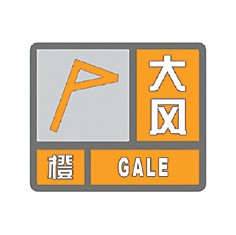
Standard: It may be affected by strong winds within 6 hours, with an average wind force of more than 10 or a gust of more than 11; Or have been affected by strong winds, with an average wind force of 10-11, or gusts of 11-12 and may continue.
Defense Guide: 1. The government and relevant departments should do a good job in preventing strong winds according to their duties; 2. Primary and secondary schools and units with weak wind resistance should suspend classes and business, and reduce the number of people going out; 3. Water operations and passing ships in relevant waters should return to Hong Kong to take shelter from the wind and strengthen port facilities to prevent ships from anchoring, grounding and collision; 4. Cut off the dangerous power supply, properly arrange outdoor items that are easily affected by strong winds, and cover building materials; 5. Airports, railways, highways, water transportation and other units should take measures to ensure traffic safety, and relevant departments and units should pay attention to fire prevention in forests and grasslands.
(4) Gale red warning signal

Standard: It may be affected by strong winds within 6 hours, with an average wind force of more than 12 or a gust of more than 13; Or have been affected by strong winds, the average wind force is above 12, or the gust is above 13 and may continue.
Defense Guide: 1. The government and relevant departments should do a good job in gale emergency and emergency rescue according to their duties; 2. Personnel should stay in windproof and safe places as far as possible, and don’t go out at will; 3. Ships returning to Hong Kong to take shelter from the wind should take active measures according to the situation, and properly arrange personnel to stay behind or move to a safe place; 4. Cut off the dangerous power supply, properly arrange outdoor items that are easily affected by strong winds, and cover building materials; 5. Airports, railways, highways, water transportation and other units should take measures to ensure traffic safety, and relevant departments and units should pay attention to fire prevention in forests and grasslands.
Six, sandstorm warning signal
The warning signal of sandstorm is divided into three levels, which are represented by yellow, orange and red respectively.
(A) the yellow warning signal of sandstorm
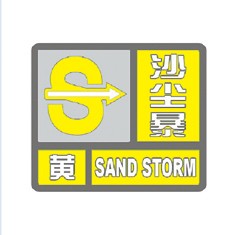
Standard: Sandstorm weather may occur within 12 hours (visibility is less than 1000 meters), or sandstorm weather has occurred and may continue.
Defense guide: 1. The government and relevant departments should do a good job in preventing sandstorms according to their duties; 2. Close the doors and windows, reinforce the structures that are easily blown by the wind, such as hoardings, scaffolding and billboards, properly arrange outdoor items that are easily affected by strong winds, cover building materials, and do a good job in sealing precision instruments; 3. Pay attention to carrying dust-proof articles such as masks and scarves to avoid dust damage to eyes and respiratory tract; 4. Patients with respiratory diseases and those who are sensitive to sandstorms should not go outdoors.
(2) The orange warning signal of sandstorm
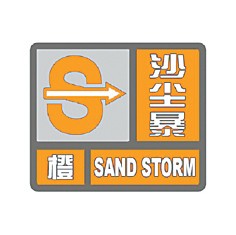
Standard: Strong sandstorm weather may occur within 6 hours (visibility is less than 500 meters), or it has already occurred and may continue.
Defense Guide: 1. The government and relevant departments should do a good job in preventing sandstorms according to their duties; 2. Stop outdoor activities and dangerous outdoor operations such as high altitude and water; 3. Airports, railways, highways and other units should take protective measures for traffic safety, and drivers should pay attention to changes in sandstorms and drive carefully; 4. Pedestrians should ride bicycles as little as possible, and outdoor personnel should wear masks, scarves and other dust-proof articles to pay attention to traffic safety.
(3) Sandstorm in red warning signal
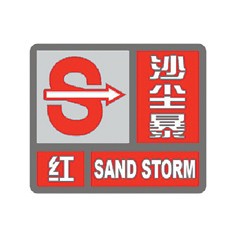
Standard: Extreme sandstorm weather may occur within 6 hours (visibility is less than 50 meters), or extreme sandstorm weather has occurred and may continue.
Defense Guide: 1. The government and relevant departments should do a good job in emergency rescue against sandstorms according to their duties; 2. Personnel should stay in windproof and dustproof places, and do not engage in outdoor activities; 3. Schools and kindergartens postpone going to school or leaving school until the end of the particularly strong sandstorm; 4. The plane stopped taking off and landing, the train stopped running and the expressway was temporarily closed.
Seven, high temperature warning signal
The high temperature warning signal is divided into three levels, which are represented by yellow, orange and red respectively.
(A) high temperature yellow warning signal
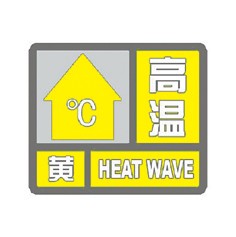
Standard: The maximum daily temperature will be above 35℃ for three consecutive days.
Defense Guide: 1. Relevant departments and units should make preparations for heatstroke prevention and cooling according to their duties; 2. Minimize outdoor activities in the afternoon; 3. Provide guidance on heatstroke prevention and cooling for the old, weak, sick and young people; 4. Personnel who work under high temperature conditions and need to do outdoor outdoor operations for a long time during the day shall take necessary protective measures.
(2) High temperature orange warning signal
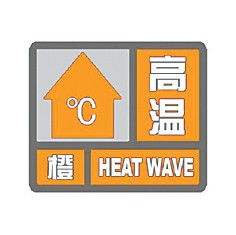
Standard: The maximum temperature will rise above 37℃ within 24 hours.
Defense Guide: 1. Relevant departments and units shall implement safeguard measures for heatstroke prevention and cooling according to their duties; 2. Try to avoid outdoor activities in high temperature period, and the personnel working under high temperature conditions should shorten the continuous working hours; 3. Provide guidance on heatstroke prevention and cooling for the old, weak, sick and young people, and take necessary protective measures; 4. Relevant departments and units should pay attention to prevent fires caused by excessive electricity consumption and excessive electric loads such as wires and transformers.
(3) High temperature red warning signal
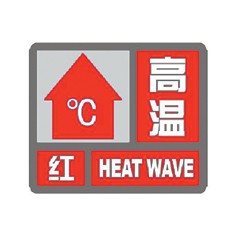
Standard: The maximum temperature will rise above 40℃ within 24 hours.
Defense Guide: 1. Relevant departments and units shall take emergency measures for heatstroke prevention and cooling according to their duties; 2. Stop outdoor outdoor operations (except for special industries); 3. Take protective measures for the old, weak, sick and young people; 4. Relevant departments and units should pay special attention to fire prevention.
Eight, drought warning signal
The drought warning signal is divided into two levels, which are represented by orange and red respectively. The classification of drought index is based on the comprehensive meteorological drought index in the national standard Meteorological Drought Grade (GB/T20481-2006).
(A) the orange warning signal of drought
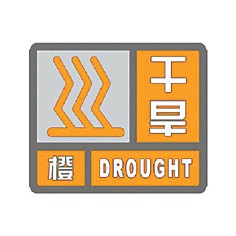
Standard: It is estimated that the comprehensive meteorological drought index will reach severe drought in the coming week (meteorological drought will occur once every 25 to 50 years), or more than 40% of crops in a county (district) will suffer from drought.
Defense Guide: 1. Relevant departments and units should do emergency work to prevent drought according to their duties; 2 relevant departments to enable emergency standby water sources, dispatch all available water sources within the jurisdiction, and give priority to ensuring domestic water for urban and rural residents and drinking water for livestock; 3. Reduce urban water supply indicators, give priority to irrigation water for cash crops, and limit a large amount of agricultural irrigation water; 4. Restrict unproductive high water consumption and service water consumption, and restrict the discharge of industrial sewage; 5 meteorological departments to carry out artificial precipitation enhancement operations in a timely manner.
(2) Arid red warning signal

Standard: It is estimated that the comprehensive meteorological drought index will reach extreme drought in the coming week (meteorological drought will occur once in more than 50 years), or more than 60% of crops in a county (district) will suffer from drought.
Defense Guide: 1. Relevant departments and units shall do emergency and disaster relief work for drought prevention according to their duties; 2. Governments at all levels and relevant departments start emergency water supply schemes such as long-distance water transfer, and adopt various means such as carrying water outside, drilling deep wells and delivering water by car to ensure the life of urban and rural residents and drinking water for livestock; 3. Limited or limited supply of domestic water for urban residents, reducing or phasing out agricultural irrigation water supply; 4. Non-productive high water consumption and service industry water consumption are strictly prohibited, and industrial sewage discharge is suspended; 5. The meteorological department shall increase the intensity of artificial precipitation enhancement in a timely manner.
Nine, lightning warning signal
Lightning warning signals are divided into three levels, which are represented by yellow, orange and red respectively.
(1) Lightning yellow warning signal
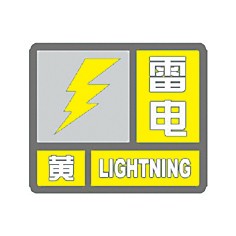
Standard: Lightning activity may occur within 6 hours, which may cause lightning disasters and accidents.
Defense Guide: 1. The government and relevant departments should do a good job in lightning protection according to their duties; Pay close attention to the weather and try to avoid outdoor activities.
(2) Lightning orange warning signal
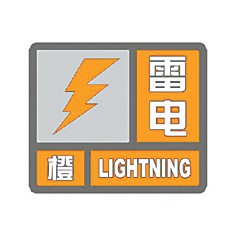
Standard: There is a great possibility of lightning activity within 2 hours, or it has been affected by lightning activity and may continue, so there is a great possibility of lightning disaster.
Defense Guide: 1. The government and relevant departments shall implement lightning protection emergency measures according to their duties; 2. Personnel should stay indoors and close the doors and windows; 3. Outdoor personnel should hide in buildings or cars with lightning protection facilities; 4. Cut off the dangerous power supply, and do not shelter from the rain under trees, poles or tower cranes; 5. Don’t take an umbrella in the open field, and don’t carry farm tools, badminton rackets and golf clubs on your shoulders.
(3) Lightning red warning signal
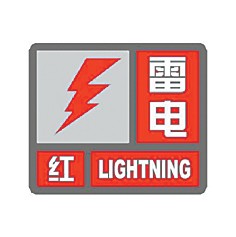
Standard: The possibility of lightning activity within 2 hours is very high, or there has been strong lightning activity, which may continue, and the possibility of lightning disaster is very high.
Defense Guide: 1. The government and relevant departments should do a good job in lightning protection emergency rescue according to their duties; 2 personnel should try to hide in buildings or cars with lightning protection facilities, and close the doors and windows; 3. Do not touch antennas, water pipes, barbed wire, metal doors and windows, external walls of buildings, and stay away from live equipment such as wires and other similar metal devices; 4. Try not to use TV, telephone and other electrical appliances without lightning protection device or with incomplete lightning protection device; 5. Pay close attention to the release of lightning warning information.
X. Hail Warning Signal
Hail warning signals are divided into two levels, which are represented by orange and red respectively.
(1) Hail orange warning signal

Standard: Hail weather may occur within 6 hours and may cause hail disaster.
Defense Guide: 1. The government and relevant departments should do a good job in hail prevention according to their duties; 2. The meteorological department should prepare for the artificial hail suppression operation and choose the opportunity to carry out the operation; 3. Outdoor pedestrians should immediately take refuge in a safe place; 4. Drive poultry and livestock into covered places, and properly protect outdoor articles or equipment such as cars that are vulnerable to hail attacks; 5. Pay attention to the lightning disaster accompanied by hail weather.
(2) Hail red warning signal

Standard: there is a great possibility of hail within 2 hours, and it may cause heavy hail disaster.
Defense Guide: 1. The government and relevant departments should do a good job of emergency and rescue against hail according to their duties; 2 meteorological departments to carry out artificial hail suppression operations in a timely manner; 3. Outdoor pedestrians should immediately take refuge in a safe place; 4. Drive poultry and livestock into covered places, and properly protect outdoor articles or equipment such as cars that are vulnerable to hail attacks; 5. Pay attention to the lightning disaster accompanied by hail weather.
Eleven, frost warning signal
Frost warning signals are divided into three levels, which are represented by blue, yellow and orange respectively.
(1) Frost blue warning signal
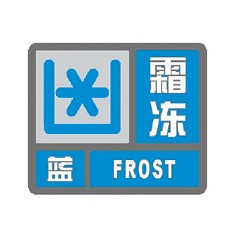
Standard: within 48 hours, the minimum ground temperature will drop below 0℃, which will have an impact on agriculture, or it has dropped below 0℃, which has already had an impact on agriculture and may continue.
Defense guide: 1. The government and the competent departments of agriculture and forestry should make preparations for frost prevention according to their duties; 2. Take certain protective measures for crops, vegetables, flowers, fruits and forestry breeding.
3. Rural grass-roots organizations and farmers should pay attention to local frost warning information so as to take measures to strengthen protection.
(2) Frost yellow warning signal
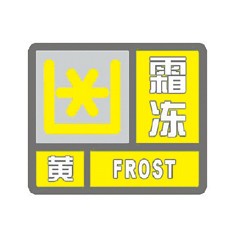
Standard: within 24 hours, the minimum ground temperature will drop below minus 3℃, which will have a serious impact on agriculture, or it has dropped below minus 3℃, which has had a serious impact on agriculture and may continue.
Defense guide: 1. The government and the competent departments of agriculture and forestry should do a good job in frost prevention according to their duties; 2. Rural grassroots organizations should widely mobilize the masses to prevent and fight disasters; 3. For crop and forestry breeding, measures such as field irrigation should be actively taken to prevent frost and freezing, so as to minimize losses; 4. For vegetables, flowers, melons and fruits, measures such as covering and spraying antifreeze should be taken to reduce freezing injury.
(3) Frost orange warning signal
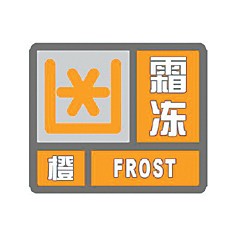
Standard: within 24 hours, the minimum ground temperature will drop below minus 5℃, which will have a serious impact on agriculture, or it has dropped below minus 5℃, which has had a serious impact on agriculture and will continue.
Defense guide: 1. The government and the competent departments of agriculture and forestry should do a good job in frost prevention according to their duties; 2. Rural grassroots organizations should widely mobilize the masses to prevent and fight disasters; 3. Take active measures to deal with the breeding of crops, vegetables, flowers, melons and fruits, and forestry to minimize losses.
Twelve, fog warning signal
The fog warning signal is divided into three levels, which are represented by yellow, orange and red respectively.
(1) Fog yellow warning signal

Standard: Fog with visibility less than 500 meters may appear within 12 hours, or fog with visibility less than 500 meters and greater than or equal to 200 meters has already appeared and will continue.
Defense Guide: 1. Relevant departments and units should make good preparations for fog prevention according to their duties; 2 airports, highways, ferry terminals and other units to strengthen traffic management to ensure safety; 3. Drivers should pay attention to the change of fog and drive carefully; 4. Pay attention to safety in outdoor activities.
(2) Fog orange warning signal
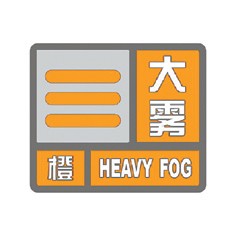
Standard: Fog with visibility less than 200m may appear within 6 hours, or fog with visibility less than 200m and greater than or equal to 50m has already appeared and will continue.
Defense Guide: 1. Relevant departments and units should do a good job in fog prevention according to their duties; 2. Airports, expressways, ferry terminals and other units should strengthen dispatch and command; 3. Drivers must strictly control the speed of cars and ships; 4. Reduce outdoor activities.
(3) Fog red warning signal
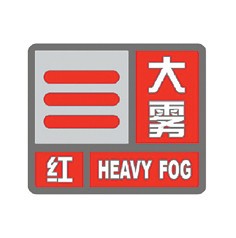
Standard: Fog with visibility less than 50 meters may appear within 2 hours, or fog with visibility less than 50 meters has already appeared and will continue.
Defense Guide: 1. Relevant departments and units should do a good job in anti-fog emergency work according to their duties; 2. Relevant units shall take timely traffic safety control measures in accordance with industry regulations, such as airport suspension of aircraft take-off and landing, temporary closure of expressways, temporary suspension of ferries, etc.; 3. Drivers should take preventive measures in foggy days according to the regulations on driving in foggy days, adopt reasonable driving modes according to environmental conditions, and find a safe parking area to stop as soon as possible; 4. Don’t do outdoor activities.
Thirteen, haze warning signal
Haze warning signals are divided into two levels, which are represented by yellow and orange respectively.
(1) Haze yellow warning signal

Standard: Haze with visibility less than 3000 meters may appear within 12 hours, or haze with visibility less than 3000 meters has already appeared and may continue.
Defense Guide: 1. Drivers should drive carefully; 2. Due to the obvious decrease of air quality, personnel should be properly protected; 3. Patients with respiratory diseases should minimize going out and wear masks when going out.
(2) Haze orange warning signal

Standard: Haze with visibility less than 2000m may appear within 6 hours, or haze with visibility less than 2000m has already appeared and may continue.
Defense Guide: 1. Airports, expressways, ferry terminals and other units should strengthen traffic management to ensure safety; 2. Drivers should drive carefully; 3. The air quality is poor, and personnel need proper protection; 4. Personnel should reduce outdoor activities, patients with respiratory diseases should try to avoid going out, and they can wear masks when going out.
Fourteen, road icing warning signal
The warning signal of road icing is divided into three levels, which are represented by yellow, orange and red respectively.
(A) road icing yellow warning signal
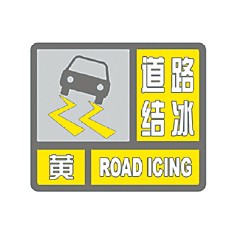
Standard: When the road surface temperature is lower than 0℃, precipitation occurs, and road icing may occur within 12 hours.
Defense Guide: 1. Traffic, public security and other departments should prepare for road icing according to their duties; 2. Drivers should pay attention to road conditions and drive safely; 3. Pedestrians should ride bicycles as little as possible when going out, and pay attention to anti-skid.
(B) Road icing orange warning signal
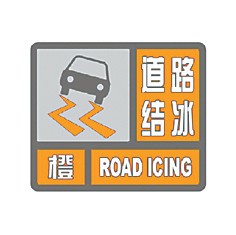
Standard: When the road surface temperature is lower than 0℃, precipitation occurs, and road icing which has great influence on traffic may occur within 6 hours.
Defense Guide: 1. Traffic, public security and other departments should do a good job in road icing emergency work according to their duties; 2. Drivers must take anti-skid measures, obey orders and drive slowly; 3. Pedestrians should pay attention to anti-skid when going out.
(3) Road icing red warning signal
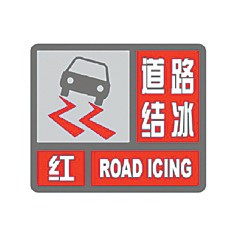
Standard: When the road surface temperature is lower than 0℃, precipitation occurs, and road icing that has a great influence on traffic may occur or has occurred within 2 hours.
Defense Guide: 1. Traffic, public security and other departments should do a good job in road icing emergency and rescue; 2. Traffic, public security and other departments should pay attention to directing and guiding the vehicles, and close the icy road traffic when necessary; 3. Personnel shall go out as little as possible. (From June 21, 2007 "China Meteorological News" Author: China Meteorological Bureau)




